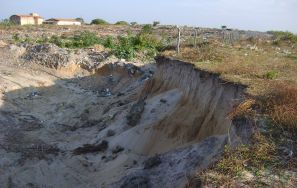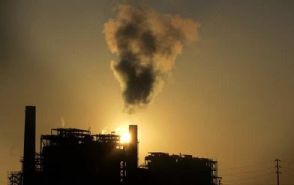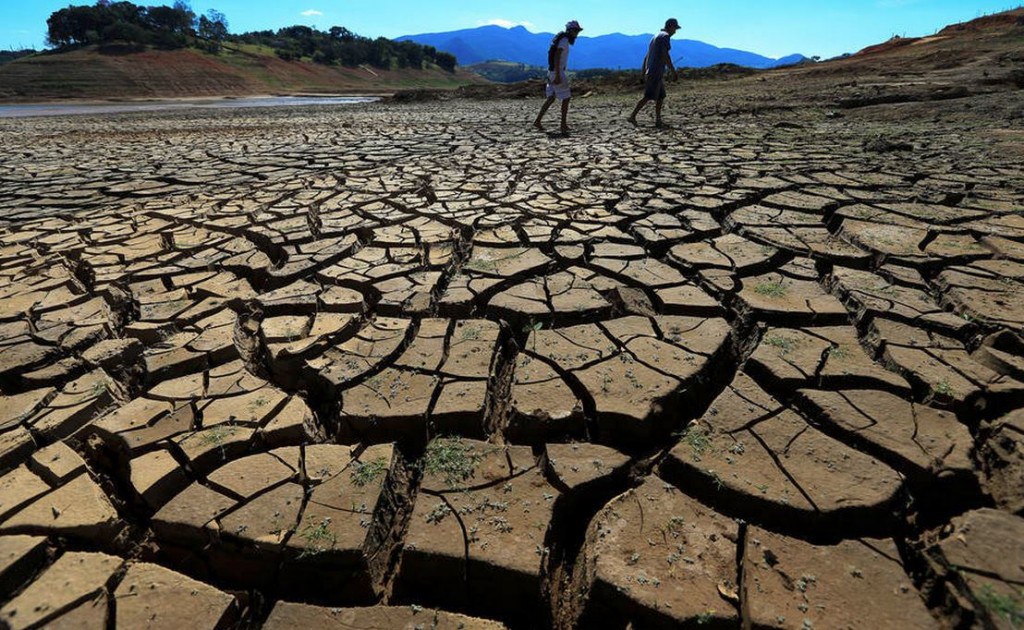Land Degradation Neutrality: An Evaluation of Methods
Environmental Research of the Federal Ministry for the Environment, Nature Conservation, Building and Nuclear Safety, 2015
In many parts of the world the quality of land is decreasing, thereby limiting its capacity to provide the manifold goods and services humanity depends on for existence. It is estimated that the health and livelihoods of an estimated 1.5 billion people are currently threatened through the negative impacts of land degradation.
Until today, several more efforts have been made to assess state and trends in global land and soils. Over time, the scope widened from dry lands to total terrestrial land, and definitions of land degradation moved from production-based aspects to the evaluation of ecosystem goods and services, and the inclusion of economic and socio-cultural dimensions.
Main assessment methods applied were expert opinion (through questionnaires), modelling, and remote sensing (through satellite imagery). The results varied substantially, depending on the conceptual framework used, total area analysed, parameters chosen for analysis, and methodologies applied. Uncertainties aside, most experts agree that at this point in time some 20-25% of terrestrial surface area are affected by land degradation.
Hopes are growing that the Sustainable Development Goals (SDGs) in general, and the target of Land Degradation Neutrality (LDN) in particular, will soon generate sufficient momentum for a universally agreed conceptual framework, and an up-to-date analysis of global land degradation.
Land degradation is a global issue with local solutions. Therefore, a concerted global effort on the post-2015 development agenda should also include the many promising SLM technologies and approaches that are already applied. This would help empower the global community to learn from each other, and contribute to building resilience at local, national, and regional levels.
This document portrays the major land and soil degradation assessments of the past and critically evaluates their results. Another section is devoted to the various methodologies that can be applied, including their strengths and weaknesses. It finally explores promising potential corner stones of future assessments, with particular reference to the SDG target of Land Degradation Neutrality.
The Economics of Desertification, Land Degradation and Drought: Methodologies and Analysis for Decision-Making
UNCCD, 2013
Land is a vital resource for producing food, preserving biodiversity, facilitating the natural management of water systems and acting as a carbon store. Appropriate land management can protect and maximize these services for society. Conversely, desertification, land degradation and drought (DLDD) have accelerated during the twentieth and twenty-first century, particularly in arid, semi-arid and dry sub-humid areas. The underlying biophysical and anthropogenic causes of land degradation are multiple and overlapping.
To effectively tackle DLDD, its drivers should be addressed and instruments designed to incentivize the sustainable management of lands. Embedded in the understanding of the ‘economics of DLDD’ is a set of methodologies for assessing the true societal impacts of land degradation. These form the cornerstone for determining how to best allocate financial, technical and human resources to tackle
DLDD.
To this end, the first part of the background paper estimates the costs of DLDD, or conversely, the benefits of sustainable land management (SLM), for different parts of the world. A toolbox illustrates how the various benefits of SLM may be assessed. Consideration is also given to the costs (implementation, transaction and opportunity costs) associated with modifying current land-use practices to be more sustainable.
The Economics of Soil Erosion: Theory, Methodology and Examples
Edward Barbier (EEPSA, 1996)
The impacts of land degradation and the depletion of soil resources have profound economic implications for low income countries. Environmental damage results in loss of current income and increased risk, and particularly affects the poor. Degradation of land resources also threatens prospects for economic growth and future human welfare.
The purpose of the following paper is to provide an overview of an economic analysis of soil erosion, concentrating particularly on explaining the farm-level economics of soil erosion and discussing with examples the appropriate methodology for measuring on and off-site costs.
Avaliação Das Custos Da Erosão Do Solo
O solo é um recurso natural importante para a humanidade. Entretanto, é manejado e utilizado, muitas vezes, de forma inadequada, resultando na erosão. A erosão do solo traz uma série de conseqüências negativas, dentre elas as econômicas. O objetivo deste trabalho é apresentar, por meio da definição dos efeitos da erosão do solo, um modelo teórico para avaliação dos seus custos, tendo em conta que a limitação de informações sobre os prejuízos econômicos gerados pelo processo erosivo dificulta uma avaliação mais precisa dos custos gerados pelo processo erosivo. Apesar de difícil e pouco usual, a valoração econômica dos efeitos da erosão do solo tem grande importância para a sociedade, permitindo a conscientização da necessidade de implantação de políticas que incentivem a adoção de práticas de manejo conservacionistas.
Costs of land degradation and benefits of land restoration: A review of valuation methods and suggested frameworks for inclusion into policy-making
Emmanuelle Quillérou, Richard J. Thomas - 2012
Land degradation has become a growing concern with the current increase in demand for arable land. Sustainable land management and land restoration practices are required in order to meet the demands to provide food and other services. Adoption of improved practices has however not been widespread partly due to a lack of clarity on the true economic value and setting of proper financial incentives.
This article focuses on the economic costs of land degradation as a prelude to two on-going initiatives involving the United Nations Convention to Combat Desertification (UNCCD). We review how ecosystem services derived from land have been economically valued to date. Economic valuation has mostly focused on the use value of provisioning services and cultural services, with limited valuation of non-use value of cultural services. Also, no unique valuation method has been applied following methodological developments, varying study objectives and data availability constraints. These factors impair coherent and consistent estimation of the total economic value of land degradation across countries. It has been identified a need to develop harmonised valuation methods to estimate total economic value under strong data and capacity constraints.
Manual para la valoración social de impactos y daños ambientales de actividades agrícolas
FAO, 2011
Este manual ha tenido como objetivo abordar mediante la revisión de referencias bibliográficas internacionales y nacionales para así crear un breve marco teórico y conceptual que sustente la identificación de las actividades agrícolas, las relacione con los componentes y procesos ecológicos de los ecosistemas afectados por ésta; los aspectos relevantes para la identificación, caracterización y selección del instrumento de control ambiental más pertinente; la identificación de los componentes del valor económico social o total junto a las técnicas, métodos y análisis económicos para la cuantificación monetaria de los efectos ambientales (impacto o daño ambiental) que le brinden a los técnicos interesados.
Este Manual comprende cinco acápites: en el primero, segundo y tercero se exponen aspectos teóricos y conceptuales; en el primero, aspectos ambientales como reseña de algunos términos de interés para el buen entendimiento de lo expuesto en los próximos, el segundo identifica y caracteriza varios instrumentos de control ambiental y en el tercero expone la teoría de la valoración social de los componentes y procesos de los ecosistemas con especificación de las técnicas, métodos y herramientas de análisis económico para la cuantificación monetaria de los efectos ambientales generados por las actividades antrópicas; el cuarto la actividad agrícola con sus características especificas y propuesta para la solución de las afectaciones ambientales y en el quinto una lista de propuestas como soluciones administrativas, legales, técnicas y educativas que deberían de efectuarse a fin de solventar los impactos y daños ambientales de las actividades agrícolas; y en éste una guía referencial para el abordaje de la valoración económica de impactos y daños ambientales generados por actividades agrícolas; finalmente unas conclusiones y recomendaciones.
Evaluación de la Degradación de Tierras en Zonas Áridas
FAO, PAN, LADA, Secretaría de Ambiente y Desarrollo Sustentable de la Nación, 2008
The Economic Cost of Environmental Degradation: A Case Study of Agricultural Land Degradation in Ghana
Kwame Boakye Fredua (Environmental Protection Agency, Ghana)
Land is a key environment and natural resource assets in Agriculture. It is also the case that the viability of arable land has a direct relationship with productivity. Land degradation caused by soil erosion is a major threat to the sustainability of agriculture.And soil erosion is one of the main forms of land degradation in Ghana. Since 2006, the agricultural sector’s contribution to Gross Domestic Product has declined, possibly because of the negative effects of land degradation i.e. soil erosion challenges among others.
The paper assesses the cost of land or soil degradation in the Agricultural Sector and its effect on the economy of Ghana with focus on the on-site effects of soil erosion on agricultural productivity. The study draws on the productivity loss and nutrient replacement cost approaches in estimating the cost of soil degradation in the agricultural sector.
The results show the Northern region as the most prone to soil degradation, and that the real cost of agricultural soil degradation as a percentage of real Gross Domestic Product is approximately 2.5% on average, for a 4 year period from 2006 to 2012, which is equivalent to approximately GH¢ 964.92 million in monetary terms. The Sustainable Land Management (SLM) practices would be key in efforts to mitigate land degradation; enhancing agricultural biodiversity, and reducing poverty.
The Economics of Land Degradation for the Agricultural Sector in Tajikistan
Camille Bann (PEI, 2011)
The objectives of the study are:
- Develop a methodological fremework for assessing the economic impact and land degradation, with a focus on the agricultural sector
- Collate data relevant to economic assessment
- Undertake an initial assessment of the costs of land degradation
- Make recommendations for future research




